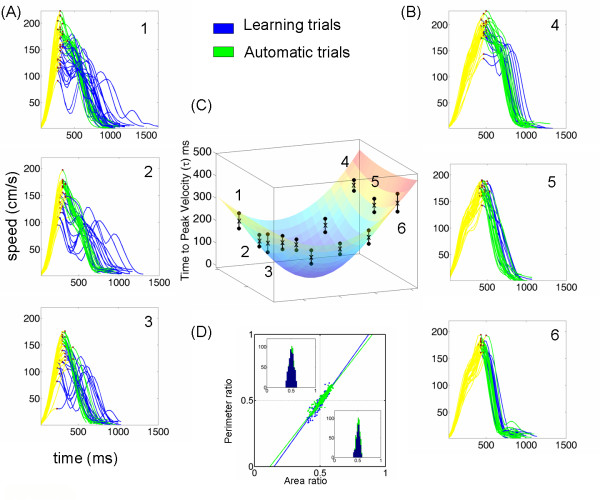Figure 4.
The dynamics-invariant nature of tau in the first pulse of the reach. (A) Monkey speed profiles from hand motions to targets 1-3 contra-lateral to the moving arm and 4-6 ipsi-lateral to the moving arm. For each target, trials are colored as learning (blue) and automatic (green) in the same order in which they were recorded. Criteria for automaticity were consistency in the distance delta travelled up to the first velocity peak, a single velocity peak and consistency in the total duration t. Yellow marks the acceleration phase (first pulse of the reach) with a highly variable distance delta travelled at a consistent time tau. Dots mark the first velocity peak. Notice that unlike point-to-point straight reaches these curved reaches have skewed speed profiles. Their acceleration phase is shorter than their deceleration phase in the contra-lateral targets. (B) Ipsi-lateral targets 4-6 have a longer acceleration phase. (C) Mean tau values at each measured location +/- two standard deviations from the mean. Twelve out of 15 locations were used to fit a surface through the points using Matlab interpolation scheme (central location was the fixation point and the other 2 missing points were blocked by obstacles). (D) Trajectory time-invariant area and perimeter symmetries were not affected by the learning of the new dynamics or by the skewed shape of the speed profiles.

